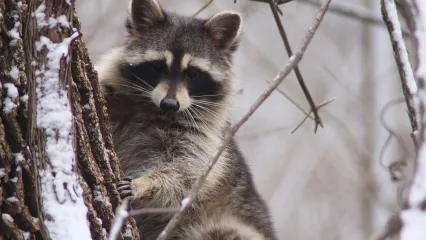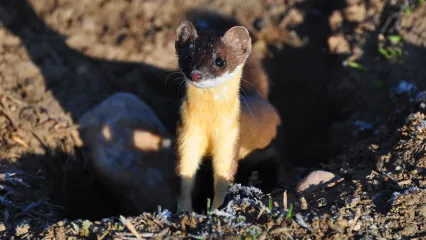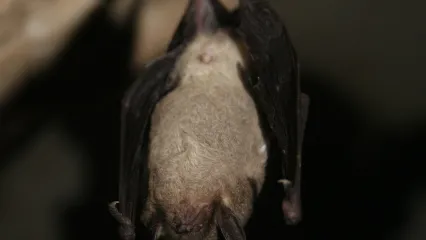
Description
Find a place in Oklahoma where there is food, water and suitable den sites and you've more than likely found a great location to spot a raccoon (Procyon lotor).
Raccoons have dense fur that ranges in color from grayish to blackish on the back to dull brown tinted with yellowish gray on the stomach.
Characterized by an opportunistic appetite, raccoons arc known to eat hundreds of species of both planes and animals, though plants are considered the most important component of the raccoon's diet in most habitats. In the spring, however, raccoons tend to feed more on animals than plants, including crayfish, insects and small rodents. Fruits top the menu in the fall, and acorns in the winter months. The belief that raccoons wash their food before eating sterns from a fixed pattern of behavior used by wild raccoons in which they dip their paws in water when searching for aquatic prey. Captive raccoons "wash" their food as a substitute for this wild behavior. Raccoons typically eat one-half to a full pound of food per day and up to five pounds as winter approaches and if they can find it. Excess food turns to a thick, insulating layer of fat.
Size
Adults range from eight to 35 pounds and are 26-40 inches long. That includes the tail, which can be up to a foot in length. Male raccoons tend to be larger than females.
Habitat
Though found mostly in the crosstimbers region of the state, don't give up seeing them in prairies, marshes, cultivated and abandoned agricultural fields and even in your own backyard, as the raccoon is highly adaptable to a range of conditions.
Life Cycle
Raccoons are nocturnal and normally solitary, but males and females join during January. February and March To breed. Males mate with multiple females and are known to travel four to five miles in search of receptive females. Females give birth to up to seven blind and nearly hairless "cubs" in April or May, though litters can consist of as few as one cub. Three to four cubs in a litter is considered average. Cubs open their eyes after two and a half weeks and nurse for eight weeks. After that period, they begin following their mother on trips in search of food. Raccoons leave their mother at about six months to establish new territory. Most will live no more than two years in the wild, though some live to be five to six years old.

